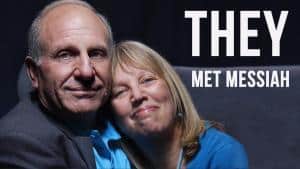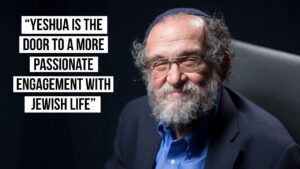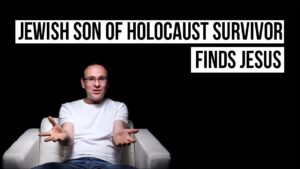Torah Portion for week 13: Exodus 1:1 – 6:1
שְׁמוֹת
Shemot (Names)
We are looking at the first portion from the book of Exodus; it is called “Names,” after the first verse in the book, which details the names of the sons of Israel who came to Egypt. We will focus on the famous encounter of Moses with the living God in the desert, at the burning bush that was not consumed (Exodus 3). Was the Messiah in the burning bush?
First, a word about Moses himself. Exodus 2 details his special birth circumstances and his growing up in Pharaoh’s palace. At this time, Egypt is the world leader – not just politically, but also in technology and science. Moses is receiving the best education on earth as he is being prepared to be the leader of God’s nation. Not only that, Josephus tells us that Moses was the commander of Pharaoh’s army, leading it in glorious victories. But all these human accomplishments during Moses’ first forty years were not sufficient for spiritual work. Moses needed an additional forty years in isolation, in the desert, to spiritually transform his life and become the man of God who could be used for God’s purposes. This is when we meet him in God’s perfect timing, at eighty years old.
God has not revealed himself to his people for 430 years, and now he reveals himself to Moses: “And the angel of the LORD appeared to him in a flame of fire out of the midst of a bush. He looked, and behold, the bush was burning, yet it was not consumed” (Exod 3:2). In both Jewish and Christian traditions, the bush itself represents Israel, a humble flora form among the nations, in affliction of fire, but with God in its midst and therefore not consumed.
A burning thorn-bush is not an uncommon sight in the desert. These bushes sometimes burst into flame spontaneously in the hot desert weather. This bush was unusual, however, because even though it burned, it did not burn up. Note that the “angel of the LORD” was in the midst of this bush, in a flame of fire. The Lord also appeared in fire when establishing his covenant with Abraham in Genesis 15, and as a pillar of fire when leading Israel out of Egypt (Exod 13:21; 14:19, 24). Who is that “angel of the LORD”? We will answer that shortly.
This burning bush captures Moses’ attention and he draws near. “When the LORD saw that he turned aside to see, God called to him out of the bush, ‘Moses, Moses!’ And he said, ‘Here I am’” (Exod 3:4). The “angel of the LORD” is revealed as a manifestation of God himself! The “angel of the LORD” appears in numerous other instances in the Hebrew Scriptures as the very presence of God on earth. This prepares the way for the New Testament and the full revelation of God taking human form – the Messiah himself, Yeshua of Nazareth! In the burning bush, Moses encounters him, and this encounter completely changes his life.
What does the “angel of the LORD” tell Moses? Note the verbs: “Then the LORD said, ‘I have surely seen the affliction of my people who are in Egypt and have heard their cry because of their taskmasters. I know their sufferings, and I have come down to deliver them out of the hand of the Egyptians and to bring them up out of that land to a good and broad land, a land flowing with milk and honey’” (Exod 3:7-8a, emphasis added). The word translated as LORD in verse 7 is the Hebrew word YHWH – the very name of God (השם המפורש). God is using human metaphor – he sees, hears, knows, comes down, and brings. To identify with human experience and relieve its suffering, God is sending the “angel of the LORD.”
This encounter changed Moses’ life and made him God’s messenger to deliver Israel. For us, this foreshadows the appearing of the Messiah: “But when the fullness of time had come, God sent forth his Son [the “angel of the LORD”], born of woman, born under the law, to redeem those who were under the law, so that we might receive adoption as sons“ (Gal 4:4, 5).






















